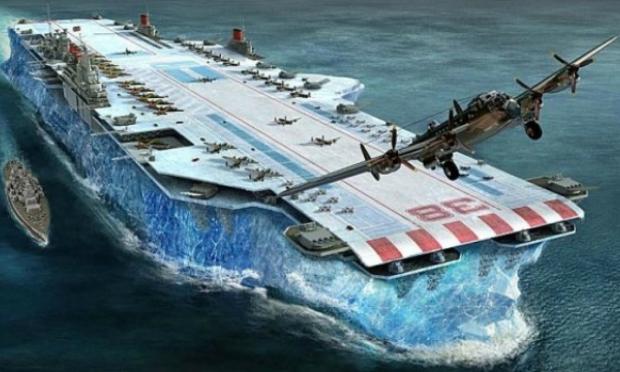The Habakkuk program was a British plan to create an aircraft carrier made by pykrete during WWII. You are probably wondered what pykrete is. Well, pykrete is a frozen ice alloy with 14% sawdust and 86% ice. This material was specially created for the Habakkuk program!
The role of the Habakkuk carrier was to encounter the German submarines in the mid-Atlantic. This exact area couldn't be covered by the range of the land aircraft of the time.
The program went through a lot of phases: first Habakkuk I would be made 100% out of wood, then Habakkuk II would be created from pykrete with steel armor and the Habakkuk III would be a smaller and faster Habakkuk II.
To demonstrate the durability of pykrete, Lord Mountbatten called Churchill and Roosevelt for a short show. Mountbatten put two blocks in a range of some meters, the one block was pure ice and the second was pykrete. Then, he shot with a pistol the first block, and it was entirely shattered. But, when shooting the second one, the pykrete remained almost intact. The bullet not only didn't penetrate the material but also bounced back and almost hit the leg of Admiral Ernest King.
After that incident, almost in 1943, the project had the support of Churchill and of course of Mountbatten. The program was taken on from the National Search Council of Canada due to their experience with similar constructions (ice physics). The small prototype was built in 1944.
However, it was proved that the full-size aircraft carrier would cost more than a typical aircraft carrier. Plus, Mountbatten himself had withdrawn from the project mainly because of the increase of escort carriers. These type of carriers almost made the Habakkuk carrier useless.
An interesting fact is that the Habakkuk prototype took almost three months to fully melt in Canada!








